8 Best Oak Trees In Maine (To Plant Or Appreciate)
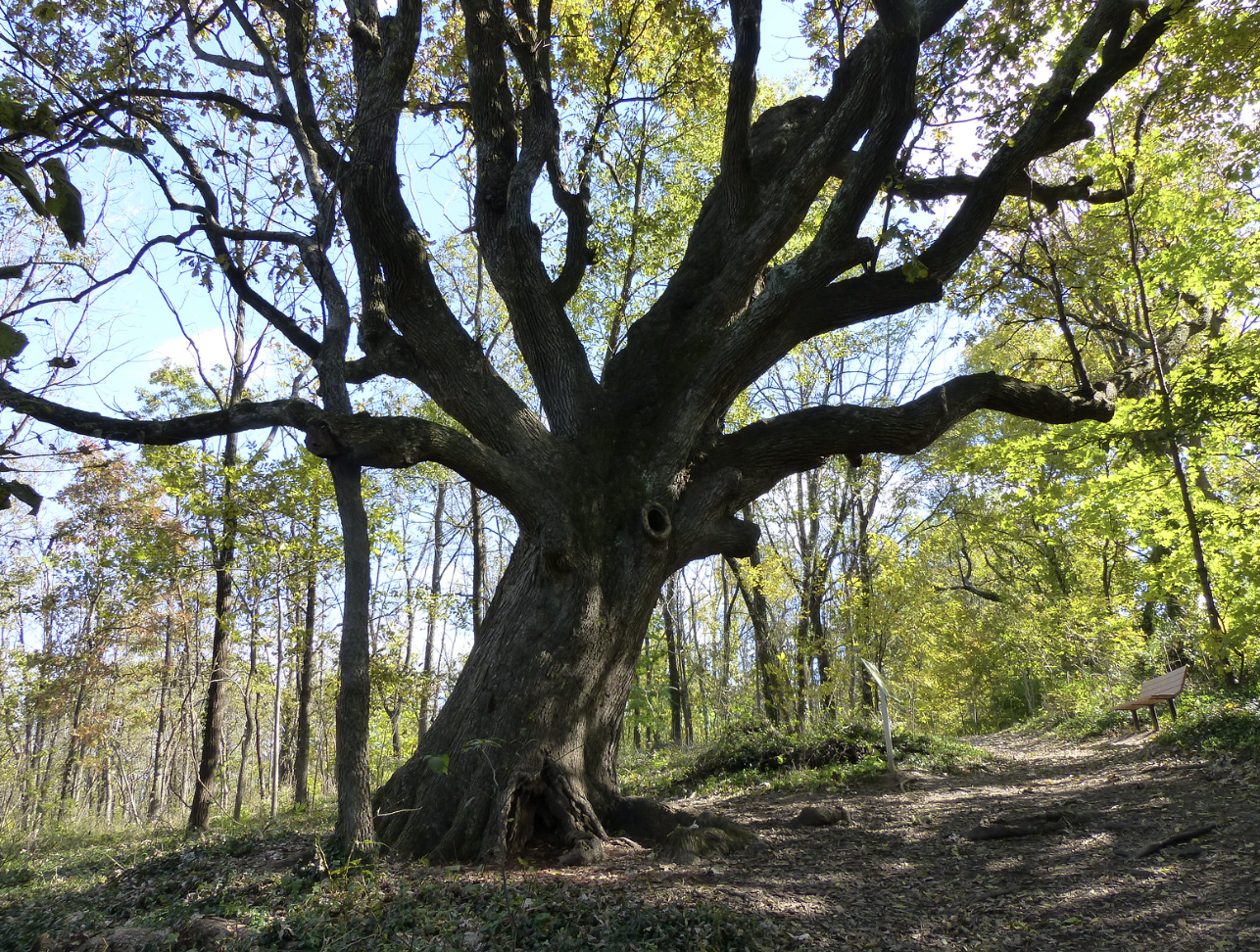
With mild summers and snowy winters, Maine's climate is perfect for growing various trees and vegetation. The state is home to some of the most impressive and picturesque oak trees in the United States, including chestnut oaks, white oaks, and bear oaks.
Moreover, these trees are popular among landowners and landscapers for their large size, longevity, and adaptability to various soil types. Here is a list of 8 oak trees in Maine.
Table of Contents
- 8 Best Oak Trees In Maine
- Scarlet Oak (Quercus coccinea)
- Bur Oak (Quercus macrocarpa)
- Swamp White Oak (Quercus bicolor)
- Black Oak (Quercus velutina)
- Northern Red Oak (Quercus rubra)
- Bear Oak (Quercus ilicifolia)
- Chestnut Oak (Quercus montana)
-
White Oak
(Quercus alba)
- Appreciate The Beautiful Oak Trees In Maine
The Top 8 Best Oak Trees In Maine
Oak trees are characterized by their thick, sturdy branches and broad crowns. Besides ornamental value, oaks are often grown for their acorns and wood. Here is a list of 8 of the best oak trees to plant or admire in Maine.
Scarlet Oak (Quercus coccinea)
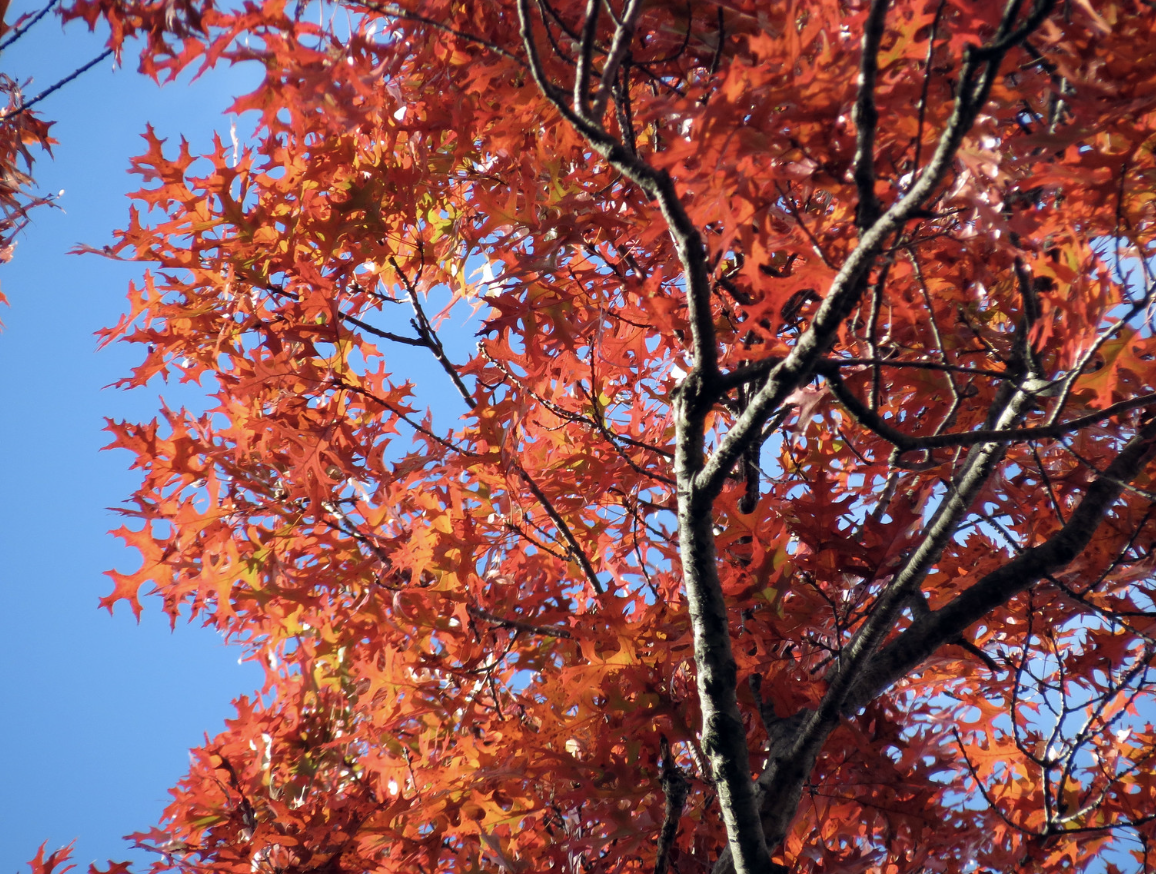
Photo Credit: Katja Schulz
Other Common Names: Red Oak
Growing Zones: 4 - 9
Average Mature Height: 60 to 80 feet
Scarlet oak is one of the prettiest trees in Maine. Its leaves are deep red to purple in the summer and change to a scarlet or maroon color in the fall.
Scarlet oak bark is light gray and smooth but can become more deeply grooved as the tree matures. They are a good choice for adding color and texture to large gardens or parks, and they are also popular for their dense, strong wood used to make furniture and flooring.
Scarlet oaks need full sun to thrive and tend to do best in well-drained soils. As a fast-growing tree, it can reach its full height of 60 to 80 feet in just a few years. Scarlet oaks also have a wide range of wildlife uses, providing food and cover for birds, rodents, and other animals.
These trees are relatively low maintenance and require minimal pruning. If you decide to do the pruning yourself, be sure to buy the best tools to cut tree branches. The most important thing is to keep plenty of space between them and other plants to avoid overcrowding. Scarlet oaks can live for up to 200 years, making them a great long-term investment.
Bur Oak (Quercus Macrocarpa)

Photo Credit: Karen Roussel
Other Common Names: Scrub oak, blue oak, white oak
Growing Zones: 3 - 8
Average Mature Height: 70 - 80 feet
Bur oak is one of the most commonly seen oak trees in Maine. It has a wide, spreading canopy with large leaves that turn yellow in autumn. The bark is dark gray and deeply ridged, and its acorns are large and round with a distinctive cap.
The bur oak produces excellent timber and is a great windbreak tree. It can tolerate flooding and prefers well-drained soils, tolerating both clay and sand.
The leaves have an obovate shape, with the middle part being the broadest. Each leaf has two to three lobes on the lower half. Bur oak is excellent for wildlife habitat and is easy to care for.
Swamp White Oak (Quercus bicolor)
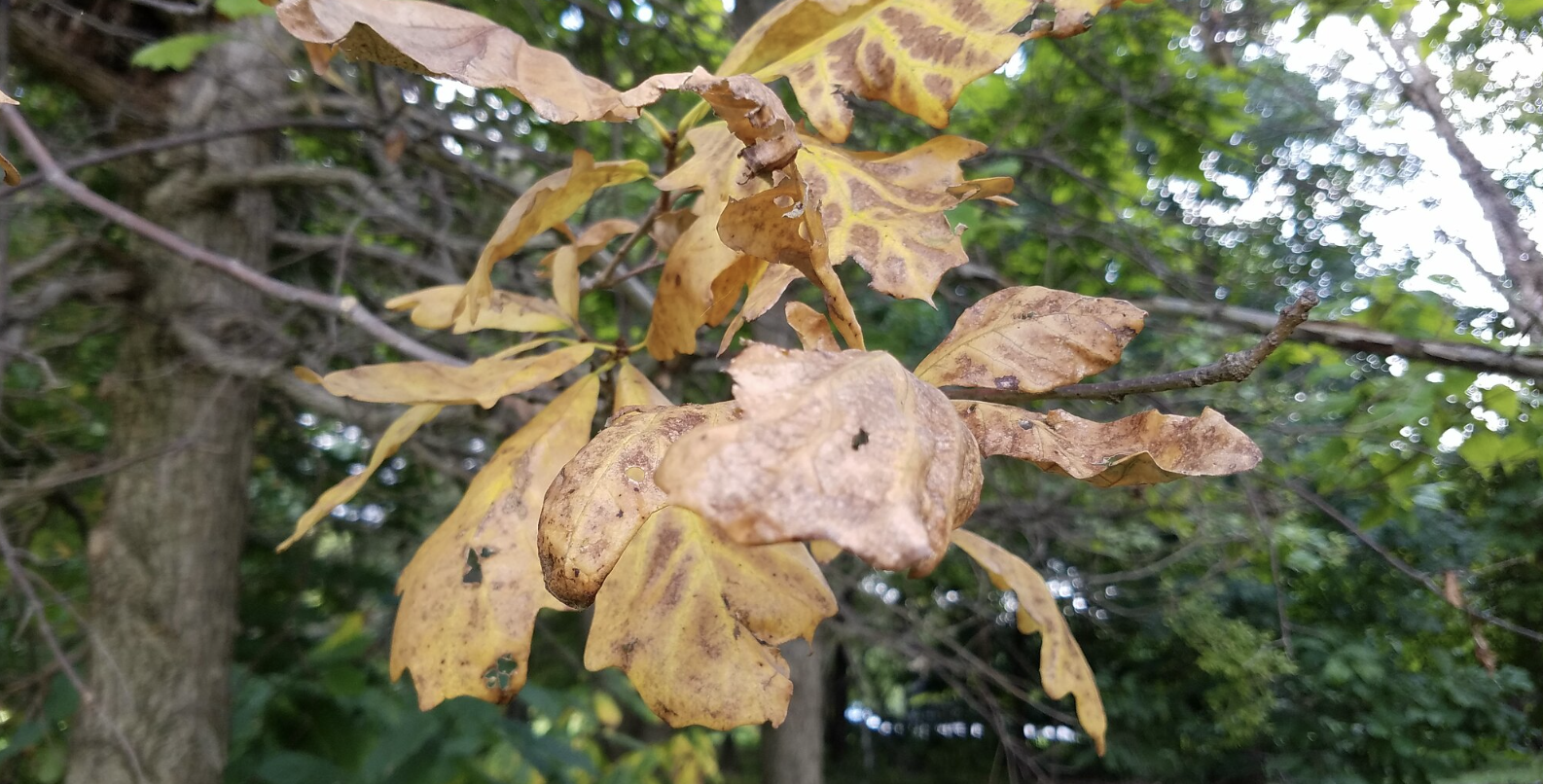
Photo Credit:
Other Common Names: Stave Oak
Growing Zones: 3 - 8
Average Mature Height: 50 to 60 feet
Swamp white oak trees have a wide, spreading form and an upright habit. They develop a rounded crown with age and can reach up to 50 to 60 feet in height.
The bark is light gray with dark pits and ridges, and the leaves are large, leathery, and deep green with whitish undersides.
The deciduous leaves of this tree are 3 to 7 inches long and turn yellow in the fall. Swamp white oak trees are drought tolerant once established and enjoy some sun or partial shade.
It prefers moist soil, making it a good choice for wet sites. Its acorns are up to an inch long, have shallow hollows, and provide food for wildlife.
Black Oak (Quercus velutina)
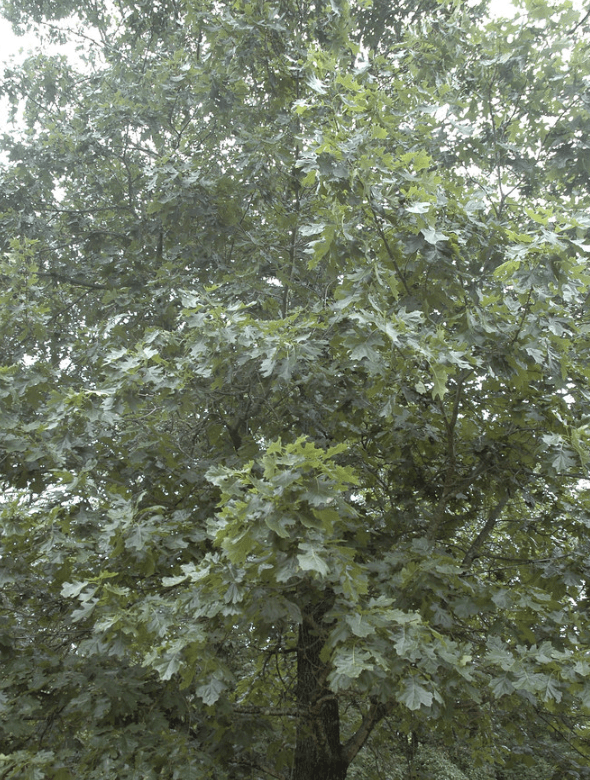
Photo Credit: Bruce Kirchoff
Other Common Names: Yellow Bark Oak, Smooth Bark Oak, Yellow Oak
Growing Zones: 5 - 9
Average Mature Height: 50 to 60 feet
One of the oak trees in Maine is the Black Oak. It is a large tree with an upright growth habit and can reach heights up to 60 feet tall.
Its bark is grayish-black, and its leaves are dark green in the summer and bright yellow in the fall. It is known for its strong wood, used to make furniture, construction materials, and even fuel.
Black Oak is a hardy tree that can withstand cold temperatures. It prefers full sun and well-drained soil but can tolerate occasional flooding. It is drought resistant and prefers average watering conditions.
The tree's fruit is an acorn, growing in pairs and maturing in the fall. The acorns serve as an important food source for birds and small rodents. They mature and ripen from August to October, but the timing may differ based on the geographical location.
Northern Red Oak (Quercus rubra)
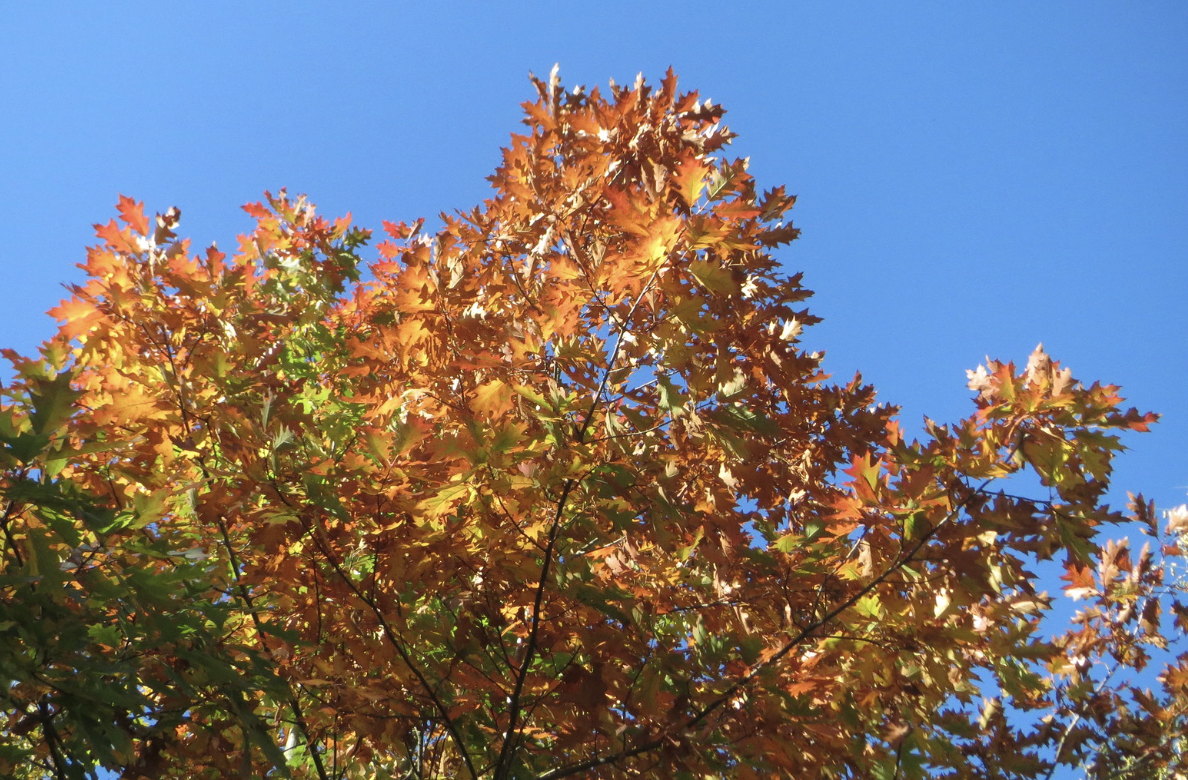
Photo Credit: Andreas Rockstein
Other Common Names: Eastern Red Oak, Mountain Oak, Gray Oak
Growing Zones: 3 to 8
Average Mature Height: 60 to 75 feet
The northern red oak tree is an upright, fast-growing tree with a broad crown. It is common in Maine and can be found as far west as Texas and Nebraska.
Its leaves are a distinct deep green color in summer, changing to shades of yellow, orange, and red in fall. Its trunk is usually straight, and its bark is dark gray or reddish-brown.
The acorns grow singly in most cases. But sometimes, they may grow in pairs and can be found at the base of the tree. They are an important food source for birds, squirrels, chipmunks, and other wildlife.
The wood of the northern red oak is heavy, and strong, making it popular for construction and furniture-making. The color is usually reddish-brown and can contain a grain pattern that resembles tiger stripes.
Bear Oak (Quercus ilicifolia)
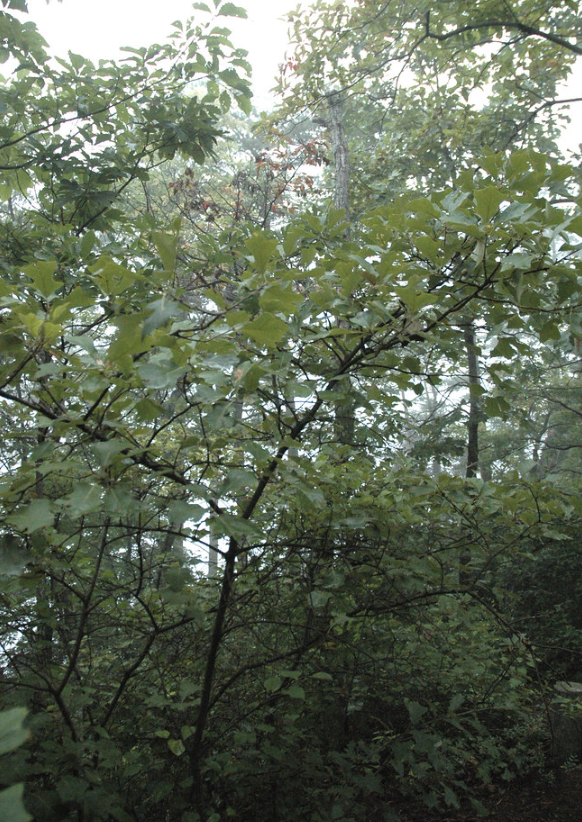
Photo Credit: Bruce Kirchoff
Other Common Names: Scrub Oak
Growing Zones: 5
Average Mature Height: Up to 30 feet
Bear oak trees are native to the eastern U.S. and grow in deciduous forests. These medium-sized trees are usually found in thickets, fence lines, and other sunny areas. They’re popular for their drought tolerance and adaptability to many soil types.
Bear oaks have a slow-growing habit, but they can reach up to 30 feet tall in optimal conditions. As a result, they’re perfectly suited for small yards and tight spaces since they don’t take up much room.
The leaves of bear oaks have an interesting shape that looks almost like a spade. They’re leathery and shiny, and they turn yellow or orange in the fall.
Chestnut Oak (Quercus montana)
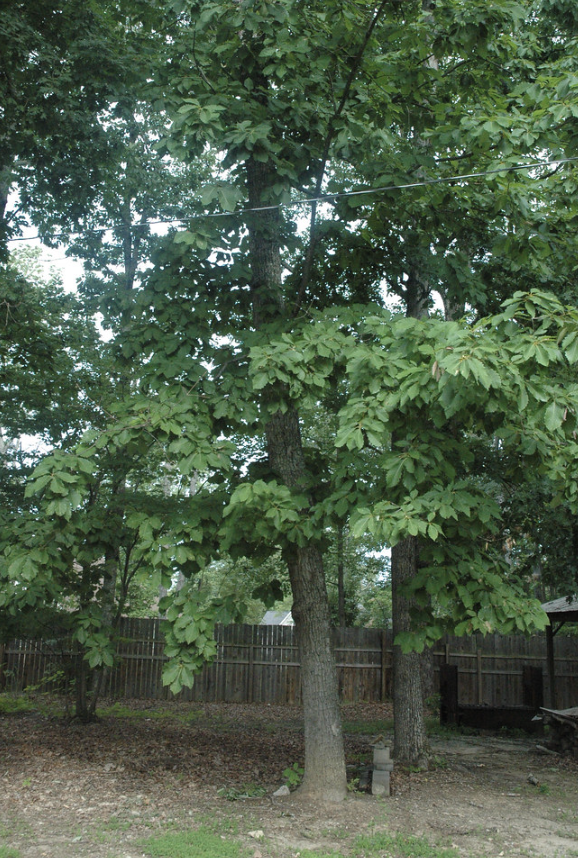
Photo Credit: Bruce Kirchoff
Other Common Names: Rock Oak, Tanbark Oak
Growing Zones: 4 - 8
Average Mature Height: 60 to 70 feet
Chestnut oaks are large trees with a round-headed shape and dark green foliage. Their leaves are deep green in summer, turning golden brown in the fall. The bark is light gray and deeply furrowed.
The tree produces edible chestnuts in late summer, which are round and have three to four ridges. These can be used for food or planting in the garden. The tree is drought tolerant and has good disease resistance. Be sure if your tree develops any disease you prune it off with a good set of tree loppers.
Chestnut oak is popular for landscaping projects due to its attractive shape and long-lasting beauty. It is also well-suited for street plantings and parks since it provides dense shade, making it a good choice for lawns and gardens.
White Oak (Quercus alba)
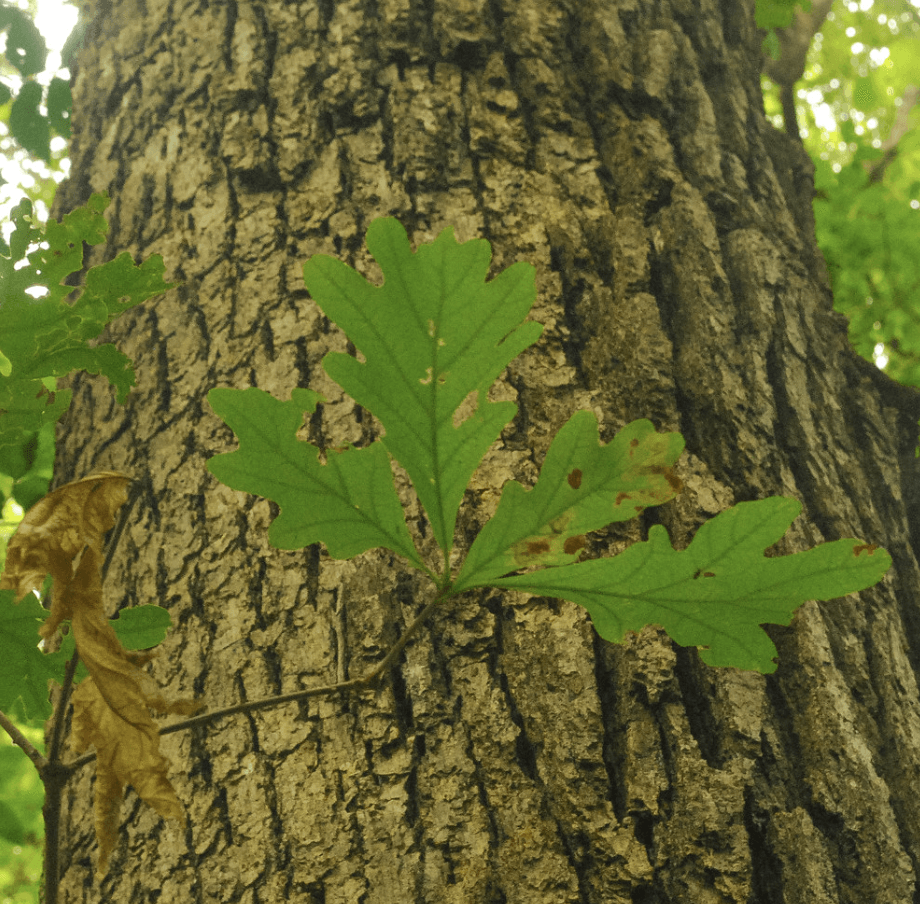
Photo Credit: Joshua Mayer
Other Common Names: Stave Oak
Growing Zones: 3 - 9
Average Mature Height: 60 to 100 feet
The white oak is an iconic tree species native to much of the eastern United States, including Maine. It has a large, broad crown and gray-brown bark. The leaves are lobed and have a silvery underside, giving them a shimmery appearance.
White oaks are slow-growing but live for centuries. They are highly valued for their acorns and excellent timber, making them a popular tree among landowners.
White oaks prefer partial shade and full sun. It should get about four hours of direct sunlight every day and can tolerate most soil types as long as it is well-drained.
Appreciate The Beautiful Oak Trees In Maine
Ornamental oaks are usually smaller than other trees and can grow in a variety of shapes, sizes, and colors. They also boast a wide range of leaf shapes, which can add to their ornamental value.
Maine is home to plenty of oak species, ranging from red oak and swamp white oak to bur oak and scarlet oak. You can choose one or more of the most common oak trees in Maine to add a nice touch to your landscape.
Different states have different species of trees. If you are out in the midwest, consider checking out our post on
pine trees in Illinois.
Before you go...
Now that you know all about the Oak Trees of Maine, maybe you'll take it one step further. There are tons of different types of trees that grow in this beautiful state. Be sure to read our guide on the best cherry trees in Maine...
Related Articles:

Christina Hernandez
Christina has done most of her research on environmental science but recently has changed her focus towards sustainable forestry. She has a passion for the outdoors and wants to spread that passion to the world.
Join our community!
Join to receive guides, insights, and the latest gardening deals!
